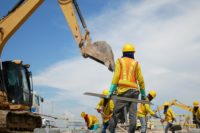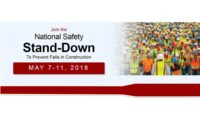How to negotiate safety practice in a construction company

Construction is a high hazard activity. Workers face serious dangers posed by heavy machinery, sharp objects, falling objects, falls from heights, asbestos, silica, electrocutions, among many other hazards. It's in the best interest of workers and construction companies to ensure the highest safety standards.
Negotiation courses prepare business owners, union leaders, office staff, and construction workers to work together to agree on the best terms for safety at construction sites. To improve your safety programs, below are nine negotiation tips for the best construction safety outcomes.
Set up employee safety committees
Some states require employees to have an Occupational Safety and Health (OSH) organization while others only need employees to elect an OSH representative for construction companies with less than 20 employees.
Instead of relying solely on office staff to write up safety manuals, mobilize your construction crew to take responsibility in guiding safety practices. Construction workers have a better understanding and insider insights into negotiating the dangers faced every day at the site.
Besides having an elected OSH representative, safety can be greatly enhanced if the construction workers have a small committee to negotiate safety regulations. Among other duties, the safety committee can be responsible for:
- Reviewing injury information
- Evaluating compensation records
- Conducting regular health and safety checks to identify risks
- Proposing measures for safety improvement
- Following up on the implementation of recommendations
- Ensuring temporary shutdown of unsafe operations
- Securing certain areas for authorized experts only
- Recommending safety training and refresher courses
Have a written Job Safety Analysis (JSA)
Every construction crew should start by doing a Job Safety Analysis (JSA) to ascertain the safety of the site. A written JSA acts as your reference point when negotiating safety standards. A typical JSA should include:
- A written hazard assessment (required by OSHA)
- Pictures depicting areas of significant hazards
- Availability and use of Personal Protection Equipment (PPE)
- Safety precautions required at each step
- Machine operations and safeguarding
- Workshop safety rules and regulations
The JSA outlines your minimum requirements (or least favorable value) during construction safety negotiations.
Know your risks
Construction workers face unique challenges to other workers when it comes to the perception of work situations. Some of the unique construction work challenges include:
- Ignoring hazards (“it's just a small task”)
- Lack of procedural knowledge (“my way works faster”)
- Taking responsibility (“it's my own fault”)
- Time and tempo pressure (“let's get this done before the next shift”)
- Lack of and use of safety equipment (“I like my freedom”)
- Pride and professionalism
- Communication struggles and social competencies
Safety precautions are easier to enforce when employees are familiar with the risks they face. Employee training may be required if there are incidences of workers ignoring safety precautions and procedures. For instance, if workers are habitually ignoring their PPE, then the employer can organize a short safety course outlining the importance of PPE.
Build positive worksite relationships
Construction companies often have a site manager or supervisor who enforces safety measures as part of their day-to-day duties. If the site supervisor is the kind that shouts at workers to get out of the way or to put on their helmets, the employees might not feel motivated to comply, and may not even respond appropriately when the supervisor is not around.
The best negotiation courses encourage the building of positive relationships based on mutual respect and trust. The initial conversations between supervisors and their crews establish the ground rules.
If the supervisor spends too much time and effort writing up worker violations, employees may ignore safety directives. However, if the supervisor develops clear communication strategies to negotiate safety in the workplace with mutual respect, employees are likely to react positively to safety directions.
One way to build professional relationships on site is to have an initial orientation on the first day at the site. The supervisor can refer to safety manuals, machine operator manuals, and OSHA regulations to help workers understand that the rules apply to all workers. The next step is enforcing the rules respectfully, consistently, and fairly.
Looking for a reprint of this article?
From high-res PDFs to custom plaques, order your copy today!








